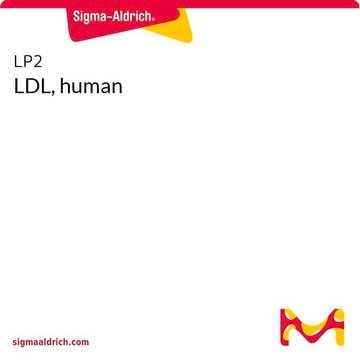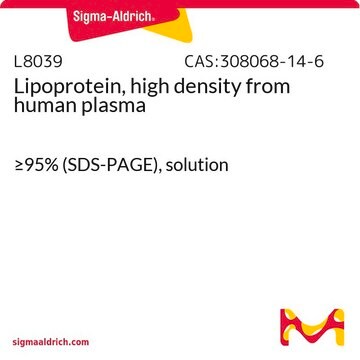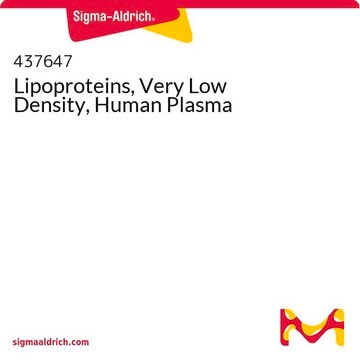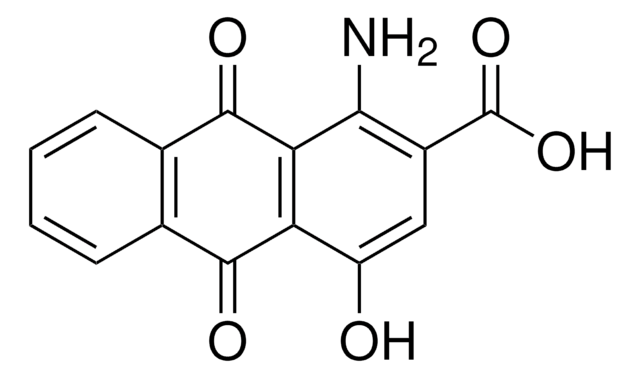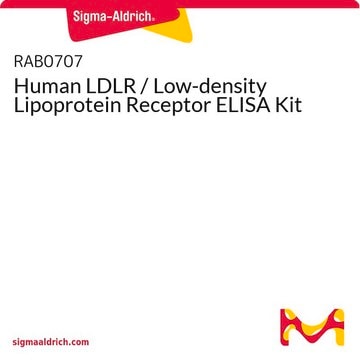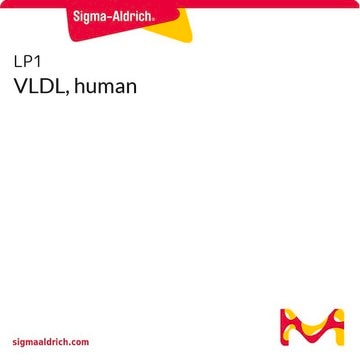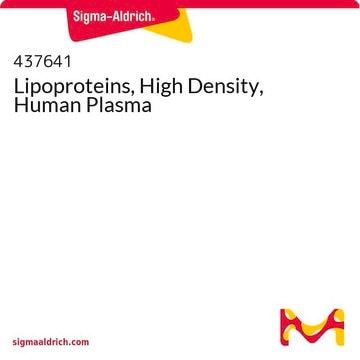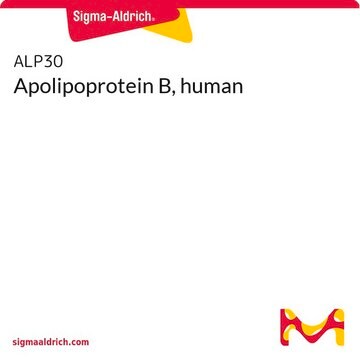SAE0053
Lipoprotein, low density from human plasma, solution
Synonym(s):
LDL, Low density lipoprotein, beta-lipoprotein
Sign Into View Organizational & Contract Pricing
All Photos(1)
About This Item
UNSPSC Code:
12352202
NACRES:
NA.61
Recommended Products
Biochem/physiol Actions
Low-density lipoprotein (LDL) is a lipoprotein that carries cholesterol throughout the body via blood circulation. LDL has a role in dispositioning cholesterol to tissues and organs of the body. Colloquially deemed as the "bad cholesterol", having high levels of LDL can lead to plaque formation in arteries.
LDL and HDL transport both dietary and endogenous cholesterol in the plasma. LDL is the main transporter of cholesterol and cholesteryl esters, and makes up more than half of the total lipoprotein in plasma. LDL is absorbed by the liver and other tissues via receptor mediated endocytosis. The cytoplasmic domain of the LDL receptor facilitates the formation of coated pits; receptor-rich regions of the membrane. The ligand binding domain of the receptor recognizes apo-B100 on LDL, resulting in the formation of a clathrin-coated vesicle. ATP-dependent proton pumps lower the pH inside the vesicle, resulting in dissociation of LDL from its receptor. After loss of the clathrin coat, the vesicles fuse with lysozomes, resulting in peptide and cholesteryl ester enzymatic hydrolysis. The LDL receptor can be recycled to the cell membrane. Insulin, tri-iodothyronine and dexamethasome have shown to be involved with the regulation of LDL receptor mediated uptake
LDL and HDL transport both dietary and endogenous cholesterol in the plasma. LDL is the main transporter of cholesterol and cholesteryl esters, and makes up more than half of the total lipoprotein in plasma. LDL is absorbed by the liver and other tissues via receptor mediated endocytosis. The cytoplasmic domain of the LDL receptor facilitates the formation of coated pits; receptor-rich regions of the membrane. The ligand binding domain of the receptor recognizes apo-B100 on LDL, resulting in the formation of a clathrin-coated vesicle. ATP-dependent proton pumps lower the pH inside the vesicle, resulting in dissociation of LDL from its receptor. After loss of the clathrin coat, the vesicles fuse with lysozomes, resulting in peptide and cholesteryl ester enzymatic hydrolysis. The LDL receptor can be recycled to the cell membrane. Insulin, tri-iodothyronine and dexamethasome have shown to be involved with the regulation of LDL receptor mediated uptake
Disclaimer
RESEARCH USE ONLY. This product is regulated in France when intended to be used for scientific purposes, including for import and export activities (Article L 1211-1 paragraph 2 of the Public Health Code). The purchaser (i.e. enduser) is required to obtain an import authorization from the France Ministry of Research referred in the Article L1245-5-1 II. of Public Health Code. By ordering this product, you are confirming that you have obtained the proper import authorization.
Storage Class Code
10 - Combustible liquids
WGK
WGK 3
Flash Point(F)
Not applicable
Flash Point(C)
Not applicable
Certificates of Analysis (COA)
Search for Certificates of Analysis (COA) by entering the products Lot/Batch Number. Lot and Batch Numbers can be found on a product’s label following the words ‘Lot’ or ‘Batch’.
Already Own This Product?
Find documentation for the products that you have recently purchased in the Document Library.
Customers Also Viewed
Our team of scientists has experience in all areas of research including Life Science, Material Science, Chemical Synthesis, Chromatography, Analytical and many others.
Contact Technical Service
